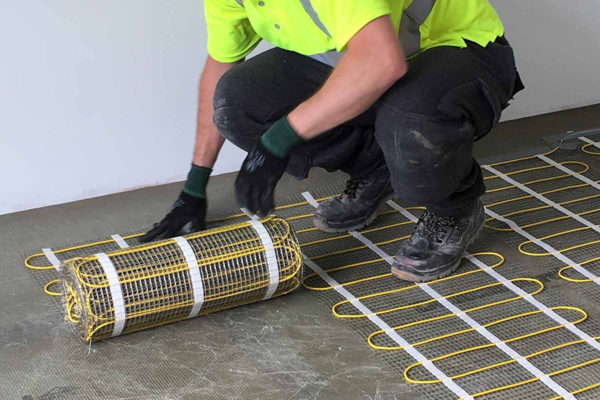In the domain of present day home plan, the mission for solace and productivity entwines flawlessly. Among the numerous developments that take special care of this pursuit, underfloor warming stands apart as a reference point of warmth and reasonableness. While conventional radiators have long held influence in warming frameworks, underfloor warming offers a more circumspect, equitably Elektrische Vloerverwarming dispersed, and energy-proficient elective that is building up some forward movement in homes and business spaces the same.
Underfloor warming, otherwise called brilliant floor warming, works on a basic yet cunning guideline: heat rises. By installing warming components or water pipes underneath the floor surface, warmth is disseminated equally across the room, wiping out cool spots and guaranteeing a comfortable climate from floor to roof. This strategy stands out strongly from regular radiators, which will generally create heat essentially close to the roof, leaving floors crisp and frequently bringing about inefficient energy utilization as property holders wrench up the indoor regulator in quest for solace.
One of the most engaging parts of underfloor warming is its adaptability. Whether integrated into new development or retrofitted into existing spaces, this framework adjusts to different floor types, including tile, wood, overlay, and in any event, covering. Additionally, its subtle nature opens up significant wall space, considering more noteworthy adaptability in inside plan and furniture position.
Past its stylish benefits, underfloor warming offers substantial advantages concerning energy effectiveness and cost investment funds. By goodness of its brilliant intensity conveyance, this framework works at lower temperatures than conventional warming strategies, lessening energy utilization and service bills simultaneously. Moreover, the capacity to zone various region of the home empowers exact temperature control, permitting tenants to fit their warming inclinations to individual rooms and utilization designs.
Besides, underfloor warming adjusts consistently with the developing accentuation on manageability in the development and plan areas. With a variety of choices accessible, including electric and water-based frameworks fueled by environmentally friendly power sources, property holders can limit their carbon impression while augmenting solace. Besides, the life span and solidness of underfloor warming frameworks add to a more practical constructed climate, diminishing the requirement for successive substitutions and limiting burn through over the long run.
Lately, headways in innovation have additionally upgraded the allure of underfloor warming. Brilliant indoor regulators and control frameworks engage clients to manage their warming from a distance, streamlining energy utilization and solace levels with exceptional comfort. Combined with advancements in establishment procedures and materials, these improvements highlight the developing openness and moderateness of underfloor warming for property holders and organizations the same.
Nonetheless, likewise with any home improvement try, cautious thought and arranging are fundamental while executing underfloor warming. Factors, for example, protection, floor covering similarity, and framework similarity should be assessed to guarantee ideal execution and life span. Also, talking with qualified experts and complying to nearby construction standards and guidelines are critical stages in the establishment cycle.
All in all, underfloor warming addresses an agreeable combination of solace, effectiveness, and maintainability in current living spaces. By saddling the regular elements of intensity conveyance and utilizing mechanical development, this warming arrangement offers a convincing option in contrast to customary techniques, enhancing the personal satisfaction for tenants while decreasing natural effect. As the journey for a greener, more agreeable future proceeds, underfloor warming stands ready to assume an undeniably essential part in molding the homes and structures of tomorrow.